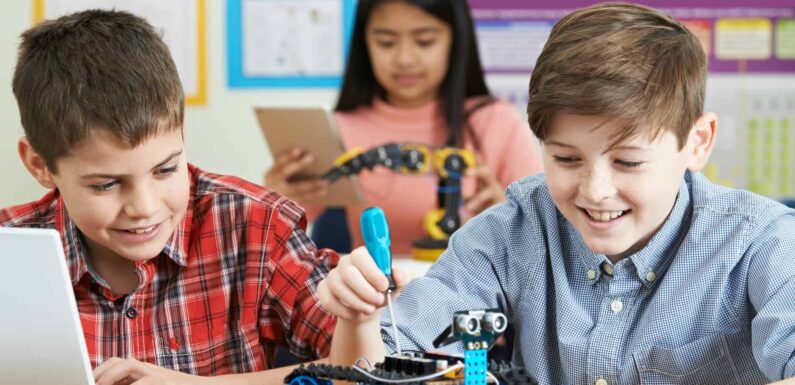
Technology is a critical point of innovation and even today, teachers struggle to interest students in this area. Could teaching robotics change that?
The teaching of robotics would correspond to new digital technologies, strongly supported by the sector and universities in the years to come. First, you have to understand what a robot actually is and then start introducing robotics to the children. Aark Learning succeeds in this area since they have years of expertise teaching children the fundamentals of robotics and ensuring that they comprehend it.
Robotic technology has a processing unit, sensors to perceive its environment, and a motor to be able to move its limbs or its wheels. He can speak, produce sounds, or flash coloured lights in response to a certain environment by following certain instructions.
The robots follow programmed commands and are not simply controlled by remote control.
Reasons to teach Robotics to children
Robotics is fun!
It’s fun for kids: they can design their own robots and race them to develop positive competitiveness. If the core concepts of programming are remembered, then the programming becomes fun like a game.
Key skills for the world of work
Creating robots is the best way to teach computer programming. Students find learning to program abstract and complicated. But by experiencing something physical like a robot, or toy robot for kids, children can better understand the concepts when using their hands.
This gives them the knowledge and skills for the future job market: thanks to the programming of robots, students can discover their abilities in a job market that will soon require technological training in all fields.
Creative thinking
Few areas of knowledge simultaneously integrate creativity and pleasure and that’s achieved through learning robotics and is proven by studies. In fact, students enjoy participating in activities in which they have complete control, which is possible with robotics education.
The trial and error method is a good way of learning Bots. Making mistakes and getting back to work to see your robot act the way you want is one of the educational virtues of programmable robots. As the robot does not wait for the consent of the instructor to function well or badly, the student is therefore forced to see for himself that his program is wrong.
He will thus learn to identify the error responsible for the malfunction and to remedy it by imagining a satisfactory solution. As programming is all about correcting errors and finally finding the right solution to the problem. When it comes to programming, there is not just one solution to achieve this goal, but several that the student can explore with pleasure.
An interdisciplinary approach
Robotics education integrates a range of skills and thus fosters a learning environment for people with different talents. It also instils teamwork spirit among the children. They learn to work together like a team and help those who have difficulty understanding the concept.
Robotics teaching kits are the best tool for project-based learning and the most exciting way to learn by doing, which involves a dynamic approach. Instead of teaching disciplines on independent topics, lessons are comprehensive, project-based and research-based, with an emphasis on cross-disciplinary learning. There are many robotics education courses apart from those taught in schools.
Concrete learning
Teaching robotics allows students who need a real-world context to engage directly with their learning. Rather than only attempting the exercise of reflection in an abstract context.
They must arrive at the solution by imagining the possibilities, without being able to manipulate and test their hypothesis. The integration of robotics makes it possible to realise tangible concepts related to programming and computational thinking.
Benefits of robotics for children
1. Improve their skills
Robotics is a great way to teach your kids many subjects like math and science. Whatever they are learning in robotics, will definitely help them in higher studies in the future.
2. Stimulate the development of creativity
Building and designing robots requires imagination and a lot of creativity from children, developing these abilities at an early age will also help them in the future.
3. Improve reasoning skills
The lessons children learn while building robots can greatly help them with their problem-solving and critical-thinking skills.
4. Improve their reading, writing and speaking skills
To build robots, they must read instructions, write lists of required materials and follow these instructions, which will help them with their reading, writing and speaking skills.
5. Gain self-confidence
Having a finished product that they made themselves also gives kids a sense of pride and accomplishment, which ultimately boosts their confidence levels.
6. Become more physically active
Kids these days spend too much time indoors in front of computers or TV screens. Building robots allow them to get out and about, making it easier for parents to include them in family sports activities like football or badminton.
Conclusion
Creating and programming robots is a challenge. However, working through frustration helps students develop their ability to deal with failure. This gives them determination, which is crucial in the development of their personality.
The interest among young students in learning robotics is increasing rapidly all around the world. It enables students to reap huge benefits, not only for the present but also for the future. So let’s encourage the new era of technology and help our children learn STEM through this cross-functional tool.

